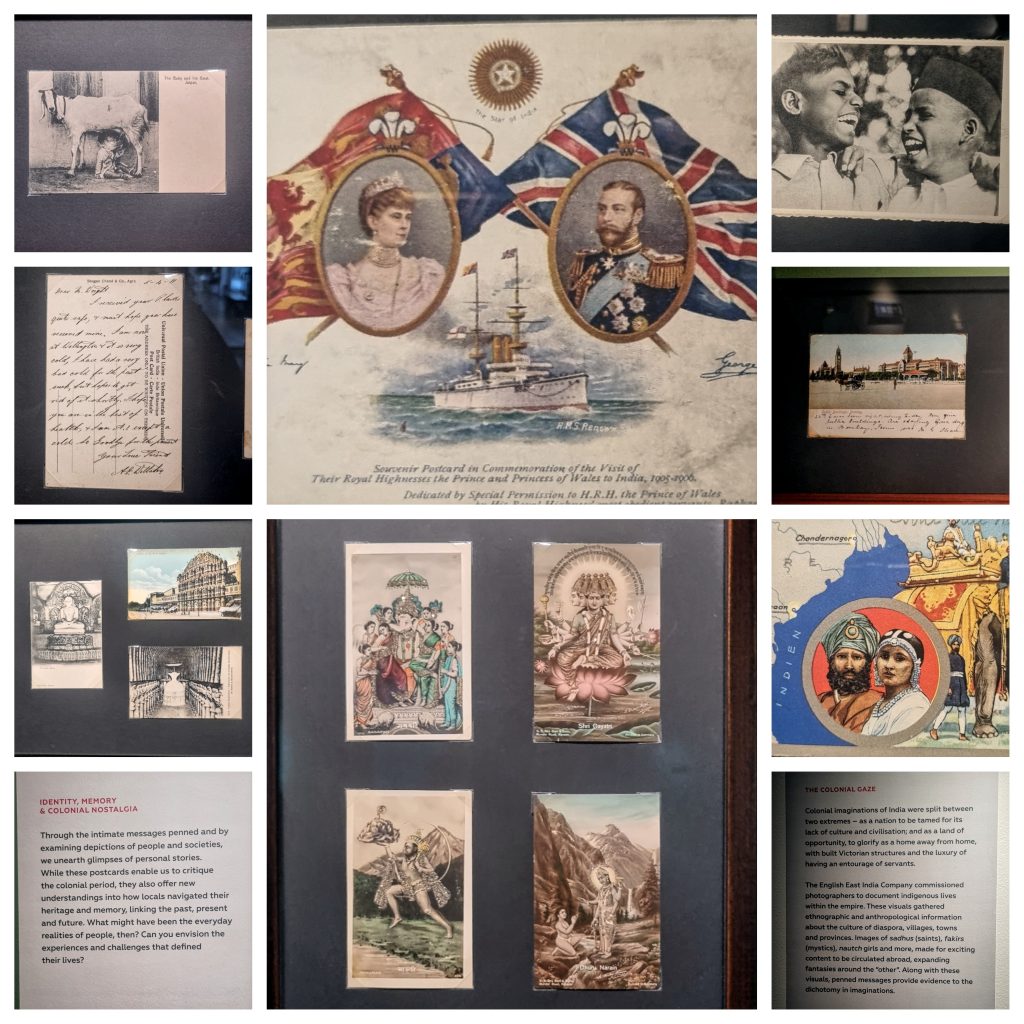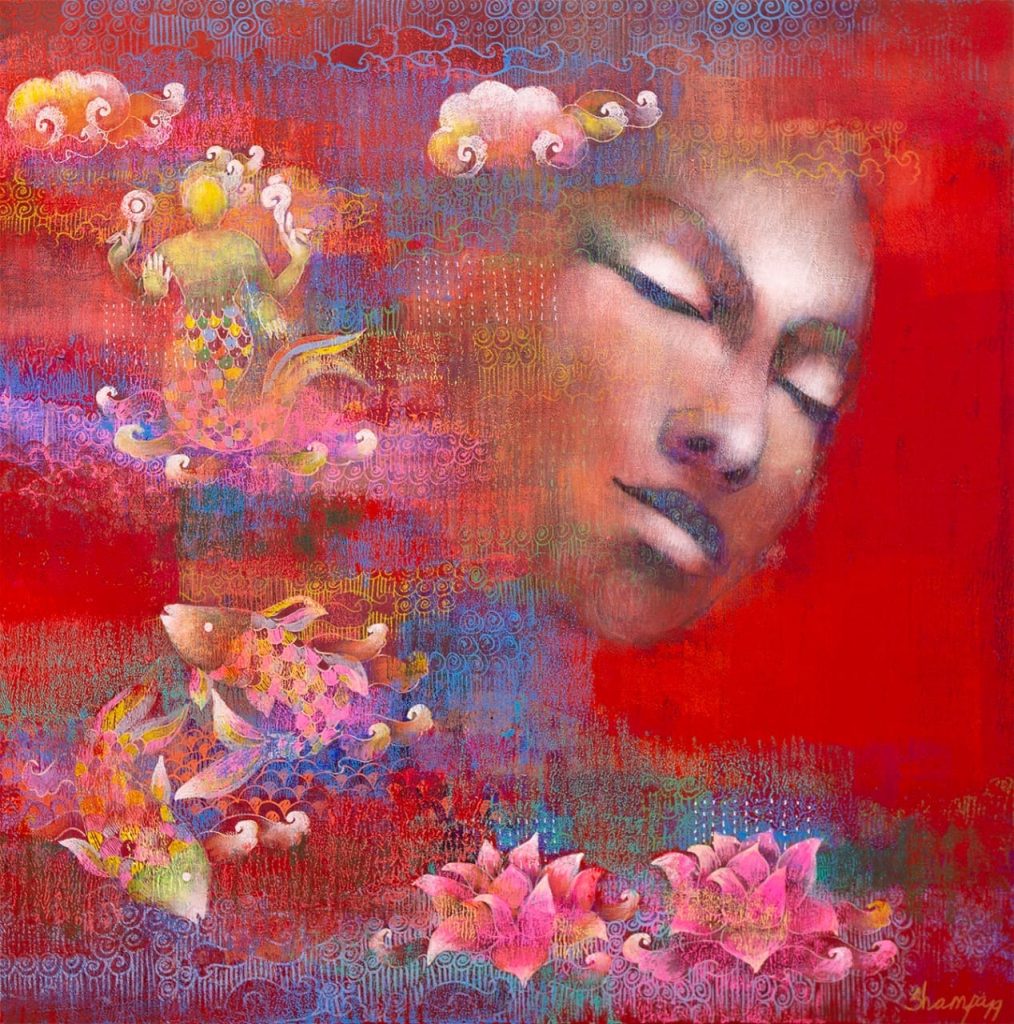“What a lot we lost when we stopped writing letters! You can’t reread a phone call.”
Liz Carpen
An iconic show making one enter a bygone era- ‘Hello and Goodbye: Postcards from early 20th Century’- curated by Khushi Bansal and Meghana Kuppa supported by HT Parekh Foundation is being held at Museum of Art and Photography Bangalore from 6th April- 18th August 2024. As one walks through the pragmatically curated displays, one can almost feel the occurrence of the past, with artefacts, photographs, and documents bringing history to life. Each exhibit tells a story, engrossing one in the events, ethos, cultures, and trends. “Delving into the dynamics between print culture, colonial propaganda and the question of identity, these objects offer a glimpse into life in the early 20th century. They enable us to analyse trends in imagery, types of messages conveyed and the demographics of those who wrote these postcards.”

The antiquity of postcards is a mesmerizing drive through time, reflecting changes in communication, culture, and technology. The first known picture postcard featured a hand-drawn image. A specific period saw a flourishing in postcard production, with scenic views, holiday greetings, photography, embellished Gods and Goddesses and artistic designs becoming common. The next phase perceived revolutions in printing technology, leading to colourful and high-quality postcards, where even handwritten text was swapped by printed fonts. In recent years, there has been an inclination towards postcards again as collectables and for their reflective and nostalgic worth.
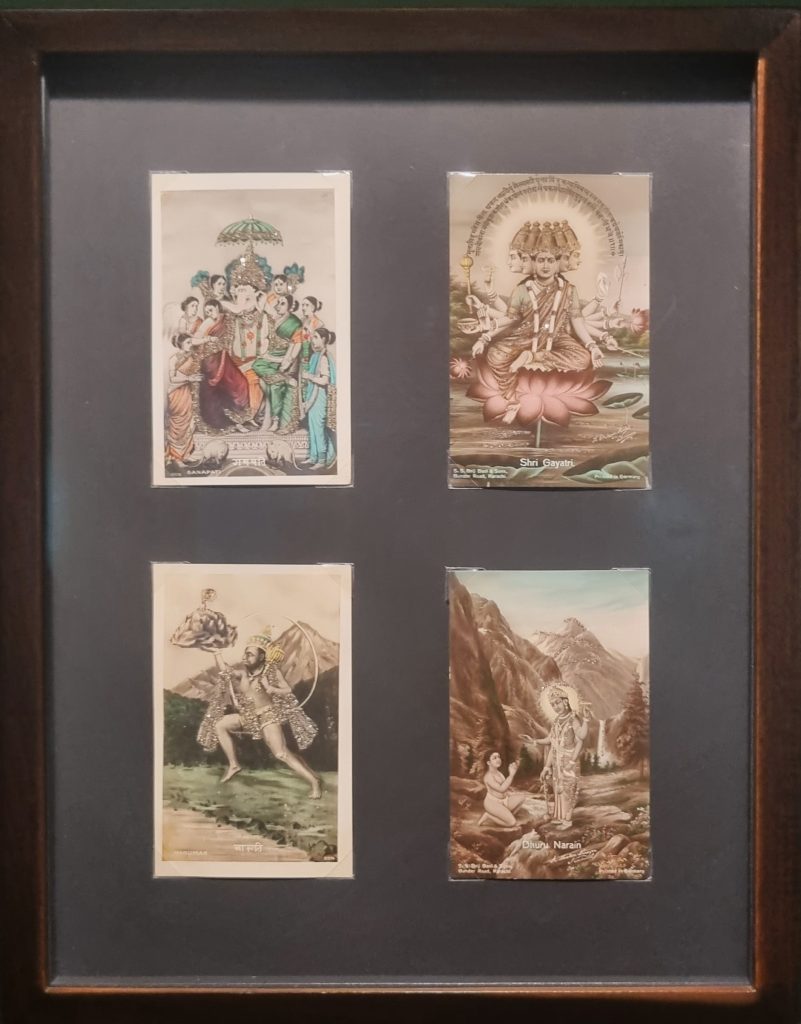
The decline in letter writing reveals broader fluctuations in communiqué, where handwritten letters only remain valued for their emotional depth and tangible association. The art of writing letters is diminishing in today’s technology-driven world. Emails, texts, and social media messages offer swift connectivity thus, overshadowing the thoughtful and personal touch of handwritten correspondence, making traditional letters a rarity. Digital communication, with its swiftness and suitability, has largely swapped handwritten communication.

Along with this exhibition, another arresting part was a Performance artist Smitha Cariappa, on 27th July 2024, sitting unobtrusively in one corner with her one eye covered and mingling with the people approaching her. The collaboration ‘Give me a message and I’ll write it for you’ became a dynamic, enriching and shared experience, both for the audience and the performer and fostered a sense of connection and immediacy. Writing letters on postcards required clarity, brevity, conciseness and a focused message due to limited space. It included highlighting key details or experiences without lengthy descriptions, with writing legible and appropriate for an open format. Smitha was trying to do exactly that by making visitors write a few lines on a paper, and then read it out for her to scribble those lines through carbon paper on a postcard and hand it over to them. She wrote the messages not only in English but in Kannada and Hindi too. She could gauge the efficiency of her work and make alterations on the fly as per the feelings of the people, enhancing the experience in totality. This response to prompts, spiced up by an element of unpredictability allows the artist to incorporate unexpected elements into her work seamlessly.

In her previous Performance ‘Give me a pen and paper and I’ll tell you how I feel’ on postcards held on 25th May 2024, Smitha performed with a Gladiolus flower stem in her mouth, which represents gratitude, recognition and integrity. “Copying the text got interrupted by my thoughts and by the looped voice from the projected screen. The handwriting got to be steadier and flow better with less tension. In between the copy of text lost its flow and the handwriting scribbled and designs got broad with large patterns to separate text…With the flow of nonstop visitors and my silence clear with the flower in my mouth, the visitors picked up the rolling roll and quietly read.” The drive was to contemplate and envisage the capacity and frailty of the human body, where she sat for six hours constantly writing found poetry and responding to postcards.
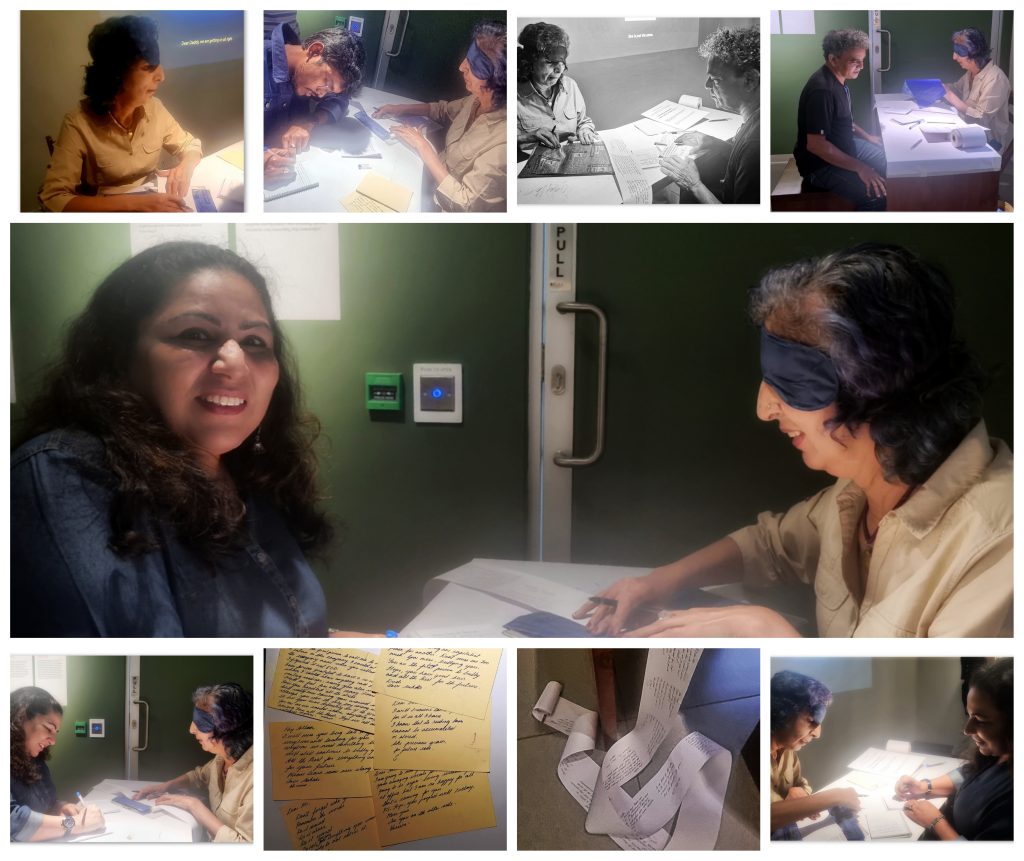
She aptly articulates, “I relate to the Postcard and find it similar to my art practice in Live Immersive interaction for its distinct features – simple, its immediate and absorbing, its open and sometimes with a delivery/ return address on one side while the opposite side as a picture and the handwritten message carries the characteristic feature of the sender… Handwriting on the postcards inspires me to do the durational piece seated inside the exhibition space, close to the projected screen and do the Immersive action – an ode to ‘handwriting and handwritten postcards’. Writing in front of the projection reminded me of the movies of the early years set in rural India and the post office and one educated man seated and writing a letter for a few Anna’s on behalf of an illiterate father/ mother or wife whose son or husband is far away.”
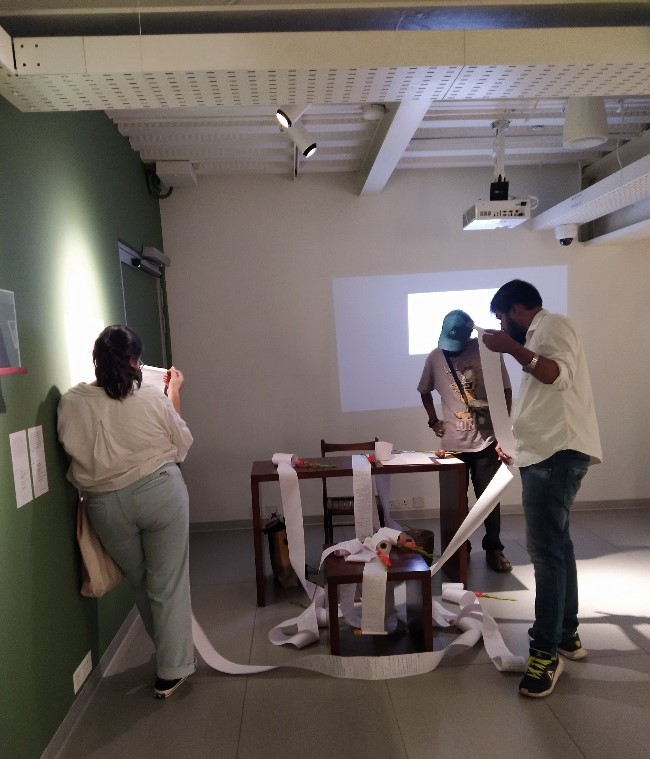
The youngest visitor she wrote a message for was a nine-year-old boy. Another extraordinary and sensitive moment for her was interacting with students from a school with difficult abilities, where they were unable to see and could communicate only through their teacher, through parents on mobile and exchanged messages. Smitha created an exceptional and memorable experience that inspired people to relive the personal, nostalgic and evocative nature of handwritten communication. Her table became a charged-up space, a ‘postcard writing station’ where people sat down and wrote a letter to someone or even a note to themselves.
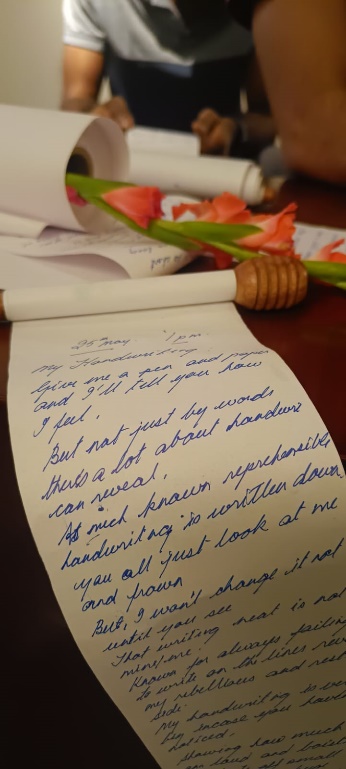
Whatever she was writing for others was becoming a part of her role too. The paper rolling down on the floor had the sentiments and messages of hundreds of people over it, which in itself appeared to be an assemblage blending with performance art. In this setup of incorporating letter writing into performance art, she illustrates the power of written words in conveying thoughts and building connections, as well as encouraging the practice of letter writing. In a few words, one can say, that Smitha’s foremost objective was to focus on the emotive profundity and narrative command of letter writing, where the progression made her travel through diverse layers of realizations, where it not only acted as a therapy for her but she was also a therapist to many people who were hesitant in their expressions and had certain mental blocks which came off while writing out their cards and talking to her.
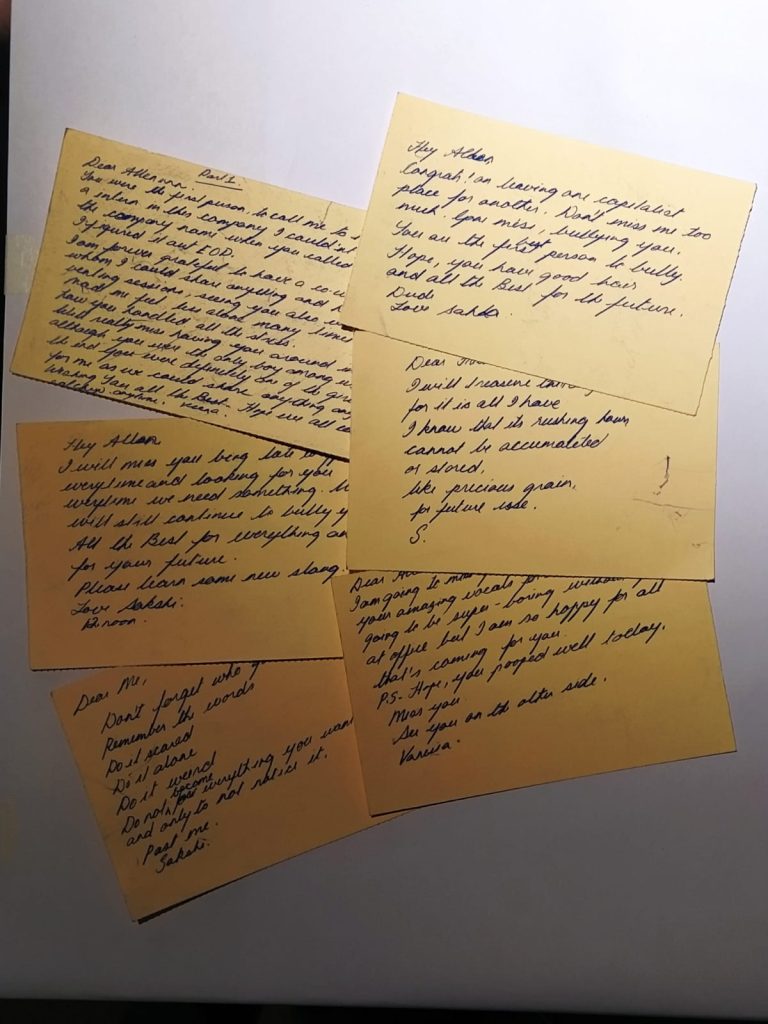
Image Courtesy – MAP Bangalore
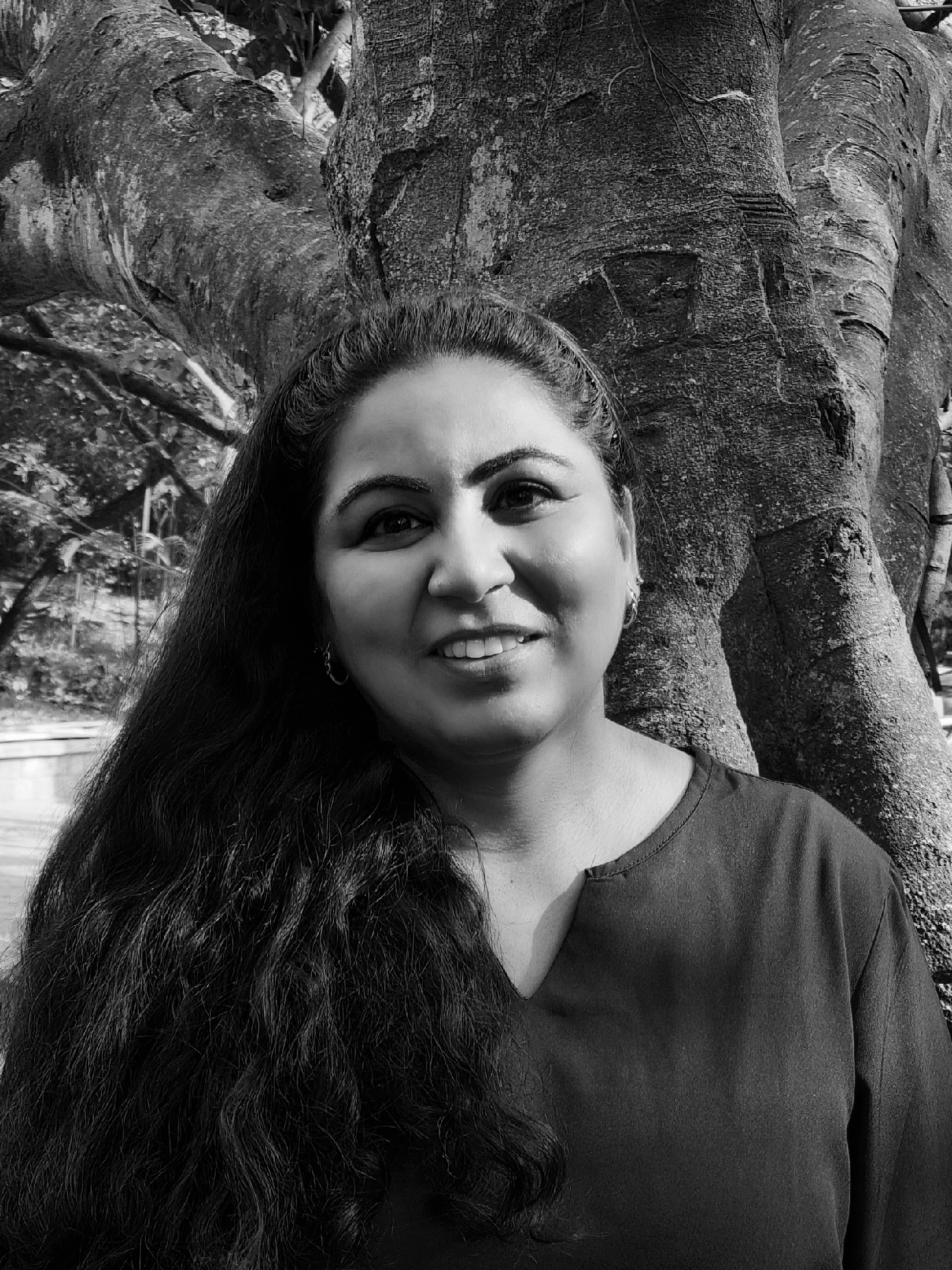
Alka is an artist and art writer with a diverse career spanning teaching, e-learning projects with the Ministry of Human Resource Development (MHRD), and editorial work. An alum of the Government College of Art, Chandigarh (BFA) and Banaras Hindu University, Varanasi (MFA, PhD), she has been recognised with numerous prestigious awards and honours.

